 "ttyymmnn" (ttyymmnn)
"ttyymmnn" (ttyymmnn)
01/15/2016 at 12:35 • Filed to: planelopnik, planelopnik history
 13
13
 8
8
 "ttyymmnn" (ttyymmnn)
"ttyymmnn" (ttyymmnn)
01/15/2016 at 12:35 • Filed to: planelopnik, planelopnik history |  13 13
|  8 8 |
Welcome to This Date in Aviation History , getting you caught up on milestones and important historical events in aviation from January 13 through January 15.
!!! UNKNOWN CONTENT TYPE !!!

January 13, 1942 – The first flight of the Sikorsky R-4.
As early as 1493, Leonardo da Vinci envisioned a vehicle that could take off and land vertically. He called it an “
!!!error: Indecipherable SUB-paragraph formatting!!!
,” and it worked on the same principal as a screw moving through water. It is unlikely that his invention would ever have worked, and he never made a model of it. But man’s fascination with vertical flight continued into the 20th century, with many attempts to create a vertical flying machine. The German aircraft builder Focke-Wulf created the first fully functioning helicopter with their
!!!error: Indecipherable SUB-paragraph formatting!!!
, a dual rotor system that was capable of vertical, controlled flight. But it was Igor Sikorsky who would perfect the helicopter we would recognize today. Sikorsky came to the United States in 1919 after becoming a successful designer of large airplanes and flying boats in Russia. By 1938, he began working on the problem of vertical flight, and his efforts resulted in the breakthrough of the
!!!error: Indecipherable SUB-paragraph formatting!!!
, the first successful helicopter in the US to use a single lifting rotor, the first to use a single tail rotor to counter torque from the main rotor, and the first to be powered by a single engine. It took two years for Sikorsky to perfect the VS-300, but the true breakthrough came with his development of cyclic control, which altered the angle of the rotor disc to allow the helicopter to move in all directions of flight. Having perfected this system of control, which is still used today, Sikorsky moved on to refining the VS-316 into a machine that he could sell to the US Army or, for that matter, anybody else who would buy it. Like the VS-300, the VS-316 was constructed from a frame of steel tubes, but the two-seat cockpit was completely enclosed with fabric, as was much of the fuselage. The first flight was made using a 165 hp Warner radial aircraft engine, but later models would receive a more powerful seven-cylinder
!!!error: Indecipherable SUB-paragraph formatting!!!
radial engine that produced 200hp and could propel the helicopter to about 75 mph with a ceiling of 8000 feet. The Army tested the first helicopter as the XR-4, and after testing they accepted the new aircraft in 1942. As part of the test regime, the XR-4 set a record for endurance, altitude and airspeed with a cross-country flight from Connecticut to Ohio, covering 761 miles and flying as high as 12,000 feet at up to 90 mph. Following acceptance by the Army, the R-4 became the first mass produced helicopter in the world. Sikorski built 131 R-4s for the US Army, US Coast Guard, and the Royal Air Force, where it was known as the Hoverfly I. And, in a demonstration of how invaluable the helicopter would become in the future, in 1944 US Army Lt. Carter Harman conducted the first combat rescue by helicopter, flying his R-4B to recover four members of an air crew that had crashed on a mountaintop in the China-Burma-India theater.
(US Coast Guard photo)
!!! UNKNOWN CONTENT TYPE !!!
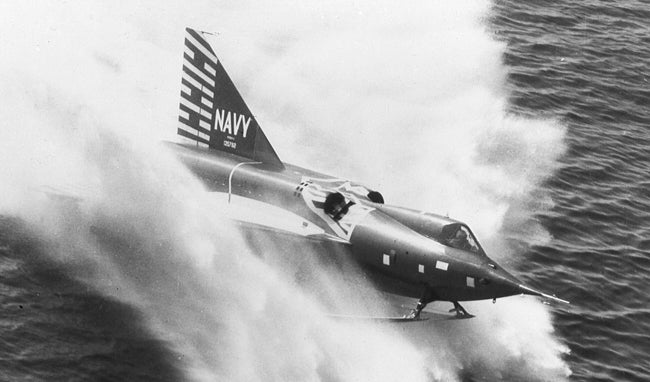
January 14, 1953 – The first flight of the Convair F2Y (YF-7) Sea Dart.
With 71-percent of the Earth covered in water, it only makes sense that aircraft designers would work to develop aircraft that could take off or land on the surface of the water. Runway space would be virtually unlimited, and long flights over water had the added measure of safety of being able to land in case of emergency. But operating from the water has certain drawbacks, most notably the extra drag produced from the floats. But the advent of the jet engine meant that aircraft no longer had to be lifted high out of the water to allow for propeller clearance so, in 1948, the US Navy issued a request for proposals to develop a new waterborne jet fighter. Convair had already been working on an internal project to create a jet that incorporated a swept wing that blended into the aircraft’s fuselage and would float on its wings in the water. A retractable step in the hull would deploy as the fighter gained speed to take off. By the time of the Navy’s request, Convair was working on their delta-winged
!!!error: Indecipherable SUB-paragraph formatting!!!
, so they modified that aircraft with what were essentially a pair of water skis that the fighter would ride on as it gained speed for takeoff. Convair also moved the F-102's air intakes backwards and up higher on the fuselage to avoid excess intake of water. Conventional wisdom at that time was that supersonic aircraft were not feasible for carrier operation due to the long takeoff rolls necessary, so the Navy hoped that the Sea Dart would provide them with a supersonic fighter that could operate from the water. Unfortunately, the engines necessary for supersonic speed weren’t available, so Convair substituted less powerful engines in their place for the two prototypes. Testing began with a series of taxi tests, and it was during one of these tests that the Sea Dart left the surface of the water, making its first flight unintentionally. The first official flight was undertaken on April 9, 1953. The official flight was delayed because Convair was struggling with severe ski pounding as the Sea Dart accelerated on the water. Eventually, Convair would try over 100 different ski shape and shock absorber configurations as they tried to eliminate the problem. Though the second prototype was canceled, the first production aircraft was built and flown, this time with a more powerful engine. However, the fighter still performed poorly, and buffeting during takeoff remained a serious problem. Built before the discovery of the
!!!error: Indecipherable SUB-paragraph formatting!!!
, the Sea Dart only achieved Mach 1 in a shallow dive, though by doing so it became the only seaplane to break the sound barrier. The Navy began to lose interest in the project, but not before a public test resulted in the death of Convair test pilot Charles Richbourg when his Sea Dart broke up in front of a large crowd of Navy officials watching the tests in San Diego. The Sea Dart was relegated to testing duties, and never entered production. Interestingly, even though the Sea Dart was not produced, the Navy still redesignated the aircraft as the YF-7 six years after its cancellation as part of the
!!!error: Indecipherable SUB-paragraph formatting!!!
adopted in 1962.
(US Navy photo)
!!! UNKNOWN CONTENT TYPE !!!
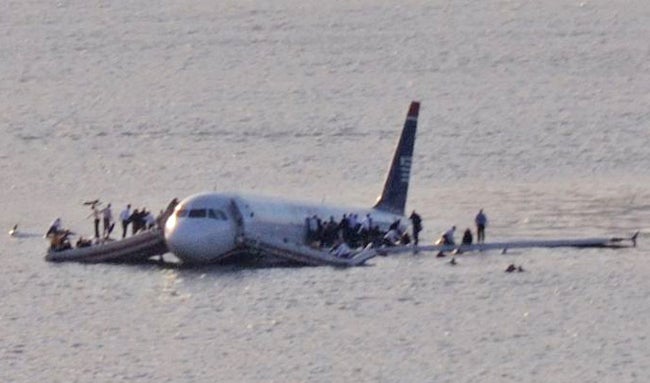
January 15, 2009 – The ditching of US Airways Flight 1549. Bird strikes are a constant danger to pilots and aircraft. And while modern jet engines are designed and tested to withstand ingesting birds, sometimes there are too many of them, or they are simply too big. Bird strikes can cause significant, often expensive damage, though it is rare that a bird strike will bring down an modern airliner. But rare doesn’t mean never, as the passengers and crew of US Airways Flight 1549 found out. Flight 1549 was a regularly scheduled flight from LaGuardia to Charlotte, North Carolina. At the controls of the !!!error: Indecipherable SUB-paragraph formatting!!! (N106US) that day were Captain Chesley “Sully” Sullenberger and First Officer Jeffrey Skiles. Roughly three minutes after takeoff, while climbing out from LaGuardia, the Airbus struck a flock of large Canada geese and both engines quickly lost power as it passed near the George Washington Bridge over the Hudson River. FO Skiles was flying the plane at the time and, after striking the birds at approximately 2,800 feet, Captain Sullenberger took over the controls while FO Skiles started the emergency checklist. Their immediate need was to find a place to land safely as altitude and airspeed were quickly dropping away. Ground controllers, alerted to the emergency, held all traffic and suggested that Sullenberger return to LaGuardia. Sullenberger quickly assessed their predicament and realized that they would never make it back, so he suggested Teterboro Airport in New Jersey. But Teterboro was too far away. A water ditching was their only hope. Captain Sullenberger calmly told controllers, “We can’t do it. We’re going to be in the Hudson.” Passing less then 900 feet above the George Washington Bridge, Sullenberger told the passengers to brace for impact, and gently set the A320 down on the surface of the river off Midtown Manhattan. From bird strike to landing, only three minutes had elapsed. Despite large holes being ripped in the fuselage on impact, the Airbus remained afloat, drifting slowly downstream with the current. Passengers escaped through the overwing emergency exits and calmly waited on the wings for rescue. At the front of the aircraft, other passengers filled exit slides that act as floating rafts when inflated. Ferry boats and other craft responded immediately to the ditching, and the first rescue boats arrived just four minutes after the plane touched down. Ultimately, all 155 passengers and crew were rescued. Only five were treated for significant injuries, while a few others were treated for hypothermia. The NTSB investigation determined the probable cause of the accident to be “the ingestion of large birds into each engine, which resulted in an almost total loss of thrust in both engines.” But they also cited a number of factors that led to the best possible outcome for the plane. Good visibility helped the pilots, and the proximity of rescue vessels aided in the swift rescue of passengers. The Airbus had more safety gear on board than regulations require. And the entire crew exercised excellent !!!error: Indecipherable SUB-paragraph formatting!!! . For their actions, the entire crew received the Master’s Medal of the !!!error: Indecipherable SUB-paragraph formatting!!! , and NTSB member Kitty Higgins described the landing as “the most successful ditching in aviation history.” (Photo by Greg L via !!!error: Indecipherable SUB-paragraph formatting!!! )
!!! UNKNOWN CONTENT TYPE !!!
Short Take Off
!!! UNKNOWN CONTENT TYPE !!!
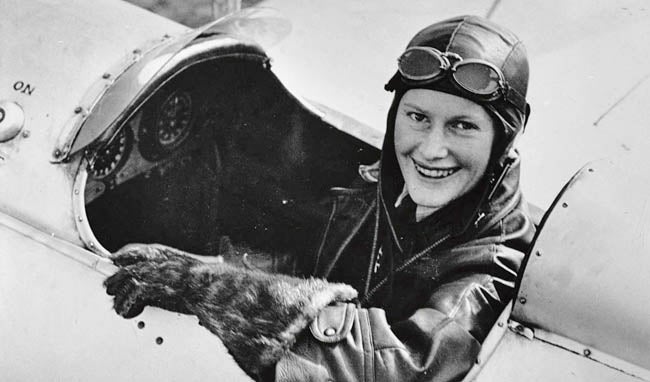
January 13, 2009 – The death of Nancy Bird Walton, a pioneering Australian aviatrix and the founder and patron of the Australian Women Pilots’ Association. Walton was born in 1915, and at the age of 19 she became the youngest Australian woman to earn a pilot’s license. After purchasing her first aircraft, a !!!error: Indecipherable SUB-paragraph formatting!!! , Walton, along with friend Peggy McKillop, began a barnstorming tour of Australia, and later formed the Royal Far West Children’s Health Scheme, an aerial medical service that covered territory not reached by other flying medical services. The first Qantas !!!error: Indecipherable SUB-paragraph formatting!!! was named in her honor. (Photo from the State Library of New South Wales via !!!error: Indecipherable SUB-paragraph formatting!!! )
!!! UNKNOWN CONTENT TYPE !!!
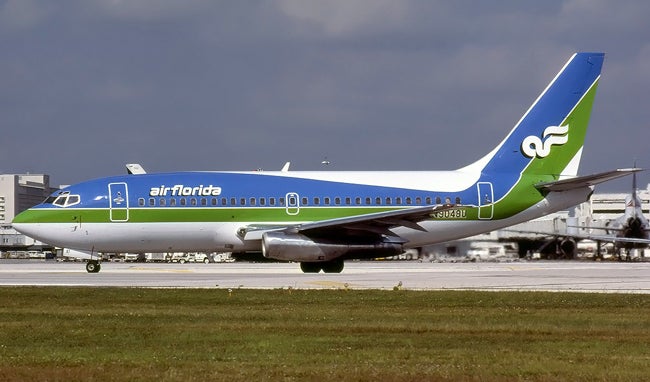
January 13, 1982 – The crash of Air Florida Flight 90, a !!!error: Indecipherable SUB-paragraph formatting!!! (N62AF) flying from Washington’s National Airport to Miami. Prior to takeoff in snow and icing conditions, the pilots failed to utilize the internal ice protection systems on the engines, and used reverse thrust while leaving the gate, an action which may have clogged the engines with ice. After waiting to take off, and accruing more snow on the wings, the pilots opted not to return to the de-icing station despite indications that the engines were not performing properly and that snow and ice had built up on the wings. Shortly after takeoff, the 737 crashed into the 14th Street bridges over the Potomac River, killing 74 passengers and crew, as well as four drivers on the bridge. Five passengers survived. The NTSB cited the crew’s inexperience with icing conditions, and the build up of ice and snow on the wings’ leading edges as the cause of the crash. (Photo by Peter Duijnmayer via !!!error: Indecipherable SUB-paragraph formatting!!! )
!!! UNKNOWN CONTENT TYPE !!!
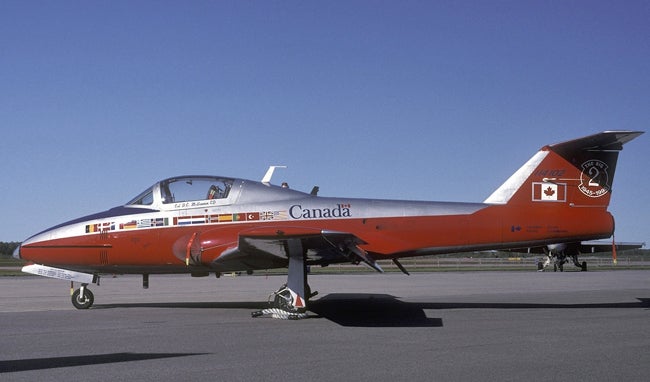
January 13, 1960 – The first flight of the Canadair CT-114 Tutor, the standard Canadian jet trainer from the early 1960s until its retirement in 2000. Strongly resembling the !!!error: Indecipherable SUB-paragraph formatting!!! , the Tutor is powered by a pair of Orenda J85 turbojet engines, the Canadian-built version of the !!!error: Indecipherable SUB-paragraph formatting!!! . Its straight wings provide excellent low-speed handling, and the design of its vertical stabilizer is intended to help students learn how to recover from a spin. An armed attack version was also developed for the Malaysian air force. Though the Tutor was retired from training duties in 2000 and replaced by the !!!error: Indecipherable SUB-paragraph formatting!!! and !!!error: Indecipherable SUB-paragraph formatting!!! , it remains in service with the Canadian Forces !!!error: Indecipherable SUB-paragraph formatting!!! flight demonstration team. (Photo by Alain Rioux via !!!error: Indecipherable SUB-paragraph formatting!!! )
!!! UNKNOWN CONTENT TYPE !!!
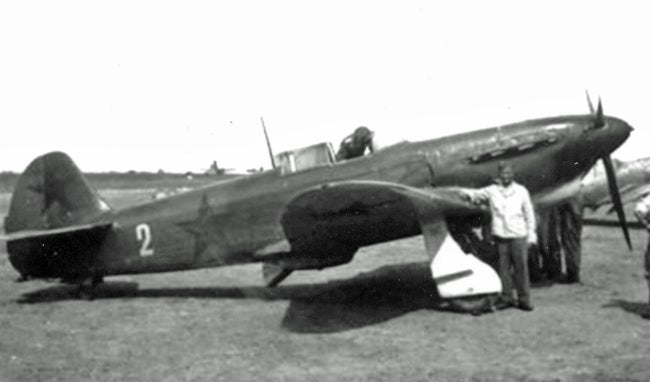
January 13, 1940 – The first flight of the Yakovlev Yak-1,
a single-seat fighter that served Russia in large numbers during WWII. Despite early teething problems with the design, particularly with oil overheating issues, the Yak-1 was nevertheless an agile and heavily armed fighter that outperformed most of the enemy aircraft it faced, particularly at lower altitudes where it served as an escort for
!!!error: Indecipherable SUB-paragraph formatting!!!
attack aircraft. A total of 8,700 Yak-1s were built during the war and, when included with its variants, the
!!!error: Indecipherable SUB-paragraph formatting!!!
,
!!!error: Indecipherable SUB-paragraph formatting!!!
and
!!!error: Indecipherable SUB-paragraph formatting!!!
, more than 37,500 aircraft were built.
(Photo author unknown)
!!! UNKNOWN CONTENT TYPE !!!
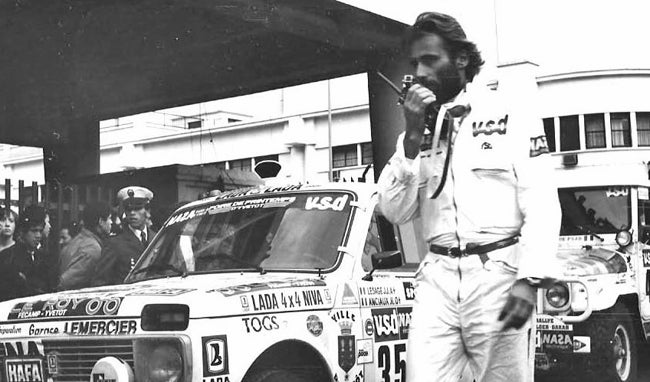
January 14, 1986 – The death of Thierry Sabine, wrangler, motorcycle racer and founder of the !!!error: Indecipherable SUB-paragraph formatting!!! . Sabine was a passenger in a !!!error: Indecipherable SUB-paragraph formatting!!! helicopter when it crashed into a sand dune in Mali during a sudden sandstorm. Also killed were singer-songwriter !!!error: Indecipherable SUB-paragraph formatting!!! , pilot François-Xavier Bagnoud, journalist Nathalie Odent and RTL radio engineer Jean-Paul Lefur. Despite Sabine’s death, the Dakar Rally continues today, though it now is held in South America. (Photo by Yelles M.C.A. via !!!error: Indecipherable SUB-paragraph formatting!!! )
!!! UNKNOWN CONTENT TYPE !!!
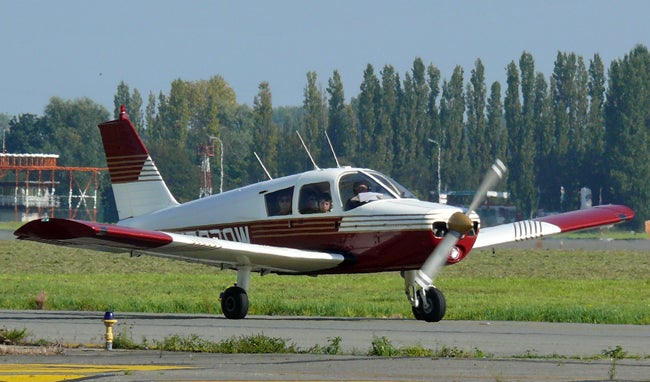
January 14, 1960 – The first flight of the Piper PA-28 Cherokee. The Cherokee is a family of light aircraft that was designed for personal use, flight training and as an air taxi. The all-metal, unpressurized monoplane received its type certification in 1960, and was subsequently developed into the Arrow, Archer, Dakota Warrior variants seating either two or four passengers and with either fixed or retractable landing gear. More than 37,500 aircraft of all variants have been built since production began in 1961, and production continues to this day. (Photo by Ad Meskens via !!!error: Indecipherable SUB-paragraph formatting!!! )
!!! UNKNOWN CONTENT TYPE !!!
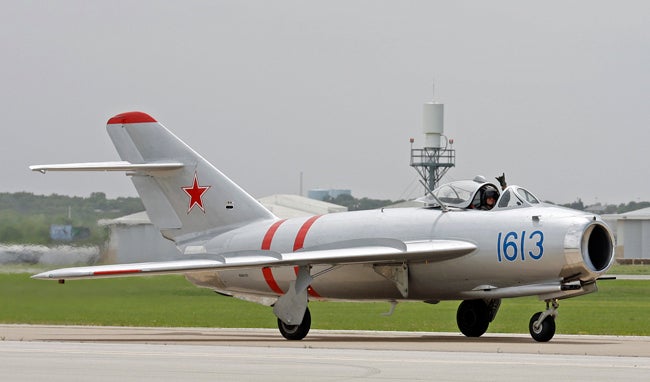
January 14, 1950 – The first flight of the Mikoyan-Gurevich MiG-17.
The MiG-17, NATO reporting name Fresco, entered production in 1952 as an improvement over its predecessor, the
!!!error: Indecipherable SUB-paragraph formatting!!!
. Development began in 1949 as an effort to fix deficiencies in the earlier fighter discovered during fighting in Korea. The MiG-17 would become one of the world’s most successful transonic fighters, and would serve into the 1960s and see action in Vietnam, where its pilots claimed 28 kills against American aircraft. Like other Russian fighters of its era, it eschewed machine guns in favor of a mix of 37mm and 23mm cannons. More than 11,000 MiG-17s were built by the Russians, Poles and Chinese.
(Photo by the author)
!!! UNKNOWN CONTENT TYPE !!!
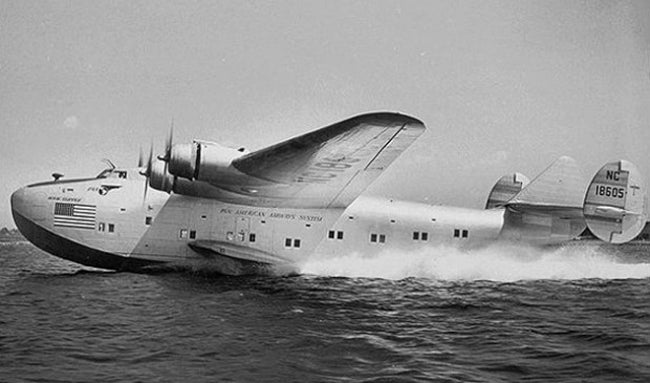
January 14, 1943 – Franklin D. Roosevelt becomes the first President of the United States to travel by airplane.
WWII was a truly global conflict, and in order for the leaders of the Allied powers to meet in a timely manner, it was necessary for US President to fly to Casablanca for a
!!!error: Indecipherable SUB-paragraph formatting!!!
with British Prime Minister Winston Churchill and Russian General Secretary Joseph Stalin. Roosevelt made this historic 15,000 mile round trip in a
!!!error: Indecipherable SUB-paragraph formatting!!!
flying boat named
Dixie Clipper
, becoming the first sitting president to fly in an airplane (Theodore Roosevelt flew before FDR, but he had left office by that time). While in Africa, Roosevelt traveled on a US Army
!!!error: Indecipherable SUB-paragraph formatting!!!
. It wouldn’t be until the presidency of Roosevelt’s successor, Harry Truman, that presidential air travel became commonplace.
(Photo via Pan Am)
!!! UNKNOWN CONTENT TYPE !!!
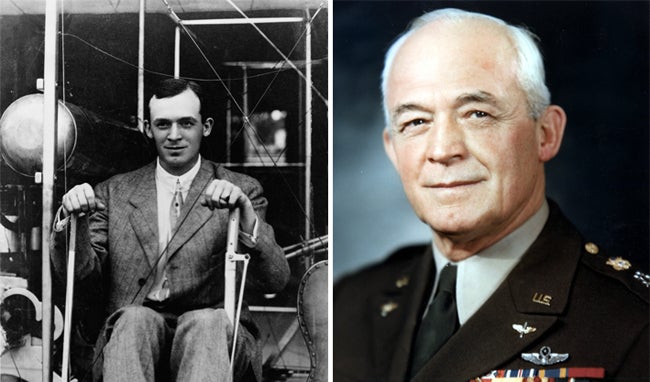
January 15, 1950 – The death of Henry Harley “Hap” Arnold.
Born in 1886 in Gladwyne, PA, Arnold was an American aviation pioneer who took flying lessons from the Wright Brothers, was one of the world’s first military pilots, and was one of the first three rated pilots in the history of the US Air Force. During WWI, Arnold oversaw the expansion of the
!!!error: Indecipherable SUB-paragraph formatting!!!
, and was a student of strategic bombing proponent
!!!error: Indecipherable SUB-paragraph formatting!!!
. During WWII, Arnold served as Commanding General of the US Army Air Forces, was the only Air Force general to hold a five-star rank, and the only general to hold a five-star rank in two different U.S. military services (US Army Air Forces and the US Air Force).
(US Air Force photos)
!!! UNKNOWN CONTENT TYPE !!!

January 15, 1943 – The first flight of the Vultee XP-54, nicknamed Swoose Goose, one of the radical designs that came out of the US Army’s R-40C request for aircraft that pushed the boundaries of aircraft design at the time. Originally designed as a heavily armed, high speed fighter, lackluster performance from the underpowered engine caused the concept to be changed to that of a heavily armed interceptor. The XP-54 featured a unique nose that could be raised or lowered depending on whether the machine guns or cannon, with its lower muzzle velocity, was being fired. Two prototypes were built before the project was canceled. (US Air Force photo)
!!! UNKNOWN CONTENT TYPE !!!
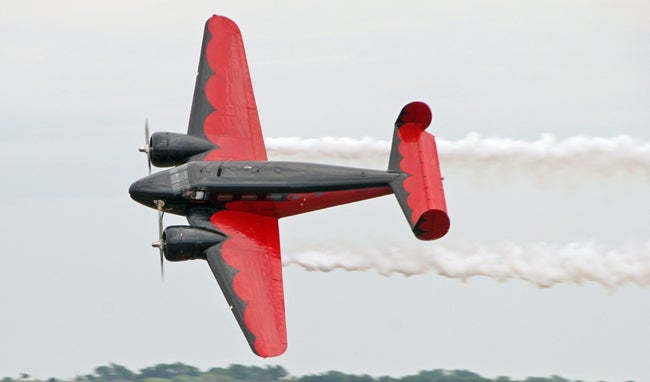
January 15, 1937 – The first flight of the Beechcraft Model 18,
a light, twin engined aircraft produced by Beech from 1937 to 1970, a production run that set a world record for its time. During WWII, more than 4,500 Beech 18s saw service with the US Army Air Forces where it was designated the C-45 Expeditor, AT-7 Navigator and AT-11 Kansan, and the US Navy, where it was known as the UC-45J Navigator and the SNB-1 Kansan. Over 90-percent of Army Air Forces bombardiers and navigators trained in the Beech 18. Following the war, the Beech 18 became a popular executive aircraft, served as a small airliner, and was used in all manner of testing and commercial flying. More than 9,000 were built during its 23-year production run, and many still fly today, with some even being used for aerobatics.
(Photo by the author)
!!! UNKNOWN CONTENT TYPE !!!
!!! UNKNOWN HEADER TYPE (MULTI-LINE BREAK?) !!!
!!! UNKNOWN CONTENT TYPE !!!
!!! UNKNOWN CONTENT TYPE !!!
!!! UNKNOWN CONTENT TYPE !!!
!!! UNKNOWN CONTENT TYPE !!!
If you enjoy these Aviation History posts, please let me know in the comments. And if you missed any of the past articles, you can find them all at
!!!error: Indecipherable SUB-paragraph formatting!!!
.
!!! UNKNOWN CONTENT TYPE !!!
 McMike
> ttyymmnn
McMike
> ttyymmnn
01/15/2016 at 12:53 |
|
Air Florida Flight 90 was ‘82
I also remember Howard Stern pretending to call Air Florida the next day asking if he could buy a one-way-ticket to the 14th street bridge, also asking if they were going to add it to their list of destinations.
 ttyymmnn
> McMike
ttyymmnn
> McMike
01/15/2016 at 12:55 |
|
Corrected the typo. Thanks.
 Rusty Vandura - www.tinyurl.com/keepoppo
> ttyymmnn
Rusty Vandura - www.tinyurl.com/keepoppo
> ttyymmnn
01/15/2016 at 13:49 |
|
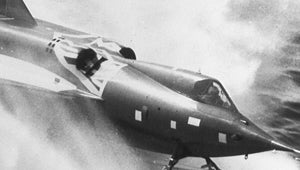
Looks like fun. Not.
 Rusty Vandura - www.tinyurl.com/keepoppo
> ttyymmnn
Rusty Vandura - www.tinyurl.com/keepoppo
> ttyymmnn
01/15/2016 at 13:50 |
|
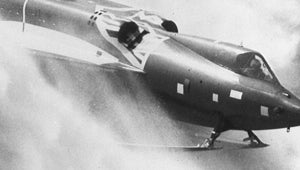
“...severe ski pounding...” I
bet
.
 Rusty Vandura - www.tinyurl.com/keepoppo
> ttyymmnn
Rusty Vandura - www.tinyurl.com/keepoppo
> ttyymmnn
01/15/2016 at 13:53 |
|

 ttyymmnn
> Rusty Vandura - www.tinyurl.com/keepoppo
ttyymmnn
> Rusty Vandura - www.tinyurl.com/keepoppo
01/15/2016 at 14:02 |
|
I have vivid memories of the images from that crash, particularly the FA who was foundering in the water before the police officer jumped in to save her life.
 ttyymmnn
> Rusty Vandura - www.tinyurl.com/keepoppo
ttyymmnn
> Rusty Vandura - www.tinyurl.com/keepoppo
01/15/2016 at 14:03 |
|
Must have been one hell of a ride.
 toadterror
> ttyymmnn
toadterror
> ttyymmnn
01/15/2016 at 16:34 |
|
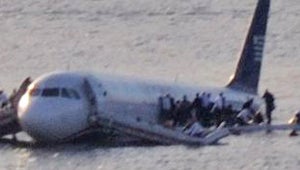
https://www.youtube.com/watch?v=-DSVDc…
Always makes me want to listen to this song - The second verse in a reference to this incident. Great song.